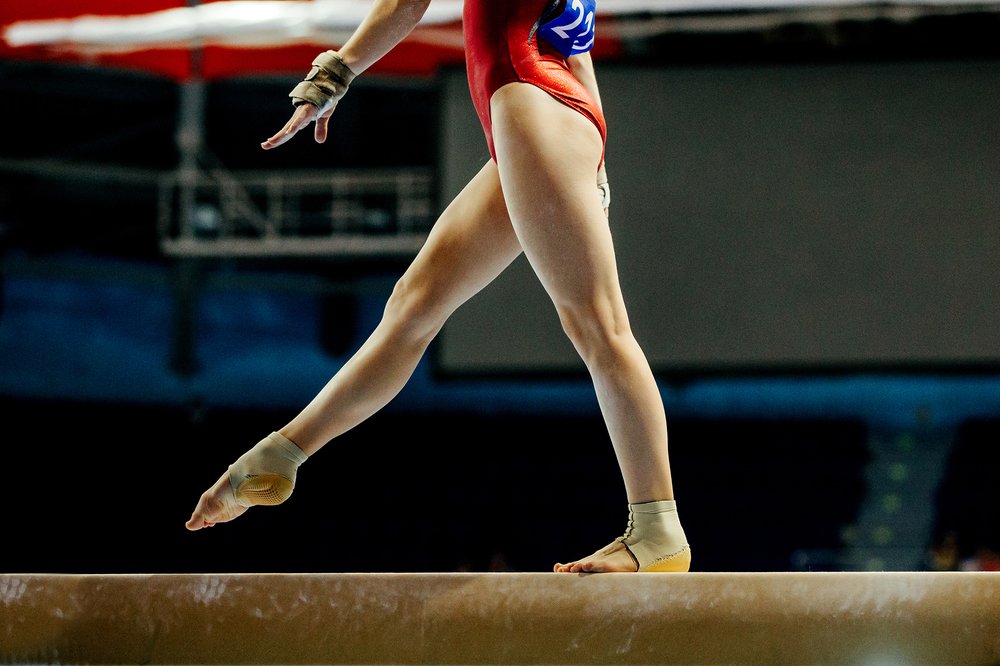 Many people love the sport of gymnastics, but few are aware of the potential injuries that can occur. From dislocations to sprains and muscle tears, seemingly minor twists and turns can have serious repercussions. In this blog, we'll explore the more common gymnastics injuries and prevention tips to keep athletes safe while practicing their sport.
Many people love the sport of gymnastics, but few are aware of the potential injuries that can occur. From dislocations to sprains and muscle tears, seemingly minor twists and turns can have serious repercussions. In this blog, we'll explore the more common gymnastics injuries and prevention tips to keep athletes safe while practicing their sport.
1. ACL Tears
Anterior Cruciate Ligament (ACL) tears are one of the most common injuries in gymnastics, often resulting from high-impact landings or awkward falls during high-intensity exercises and stunts. The ACL is a ligament located in the knee joint that connects the femur and the tibia, providing stability to the knee and helping it to absorb shock during activities like running, jumping, and making sudden turns. When this ligament is injured (torn), it can cause severe pain as well as swelling and a lack of range of motion in the knee joint.
In gymnastics, ACL tears occur more frequently than any other type of injury due to the nature of events being performed by athletes. High-intensity activities such as vaulting, tumbling, and bar routines all require extreme flexibility as well as sudden changes of direction which can put immense strain on the ACL if proper technique isn’t utilized properly with each movement. Furthermore, since many gymnasts sometimes find themselves competing for a very long period without rest or adequate warm up time - this increases their risk for injury substantially and makes them even more likely to suffer from ACL tears.
2. Wrist Fractures
Wrist fractures are one of the most common gymnastics injuries due to the amount of force that is exerted on the joints during high-intensity skills such as vaulting, tumbling, and floor work. Because many of these activities require a great deal of upper body strength, athletes put extra strain on their wrists. In addition, a lack of proper warm-up or stretching can make athletes more susceptible to wrist fractures or lead to overuse injuries. Furthermore, improper landing technique or grip can contribute to an increased risk of wrist injury.
One way to reduce the chances of suffering a wrist fracture is to ensure proper training and technique before attempting difficult skills. Gymnasts should also take precautionary measures such as using supportive wrist wraps or tape during practice in order to protect themselves from potential injury.
3. Ankle Sprains
Ankle sprains are another common injury among gymnasts due to the amount of twisting and landing on one foot that is required during their routines. Due to the vigorous nature of gymnastics, ankle ligaments become over-stretched and torn, causing pain and swelling. In addition, since gymnasts often land on their feet after jumping or flipping in the air, they can easily roll an ankle if they are not properly aligned upon landing. Poorly maintained equipment or mats can also increase the risk of ankle sprains.
To reduce their chances of suffering an ankle injury, it's important for gymnasts to take preventative measures such as stretching before practice and using supportive braces or tape when necessary. Additionally, proper technique and adequate warm-up help ensure that athletes don't suffer from too much stress on their ankles during practice.
4. Spinal Fractures
Spinal fractures are extremely common injuries in gymnastics, especially among female athletes. This type of injury occurs when the vertebrae of the spinal column are fractured or broken due to trauma such as a hard landing from a fall or severe twist during an uneven bar routine. When these types of fractures occur, it can result in paralysis and even death if not properly treated. Additionally, since most gymnasts place significant amounts of stress on their spine during activities like tumbling and vaulting, they are at higher risk for spinal fractures compared to other athletes.
To reduce the risk of suffering this type of injury, gymnasts should ensure that they receive proper training and use protective gear while practicing. Athletes should also prioritize proper stretching and warm up techniques before working out or competing to help prevent serious spinal complications.
5. Elbow Dislocation
Elbow dislocations, also known as elbow subluxation, are a common injury among gymnasts. This type of injury occurs when the elbow joint is stretched beyond its normal range of motion and the ligaments that attach it to the humerus bone become damaged or tear. This can be caused by excessive stretching, overuse, blunt force trauma, or even just an awkward fall. Elbow dislocations typically involve a popping sound and severe pain when attempting to use the arm in any way.
In gymnastics, elbow dislocations are extremely common due to the extreme range of motions and styles of movement required for successful completion of routines. The risk increases while performing more advanced skills such as multiple somersaults in a row or difficult swings on uneven bars or rings; both require additional force and torque than basic skills like cartwheels or handstands. Furthermore, most gymnastics injuries occur during practice instead of competition due to the lack of proper warm-up prior to training and fatigue resulting from long days of practice which puts athletes at an increased risk for injury.
As an athlete, you can be highly exposed to injuries due to the nature of the sports. If you are an athlete struggling with an injury or are interested in learning more about sports medicine, contact Dr. Michael Rytel M.D., Orthopaedic Surgery and Sports Medicine or schedule a free consultation directly from our website today!

